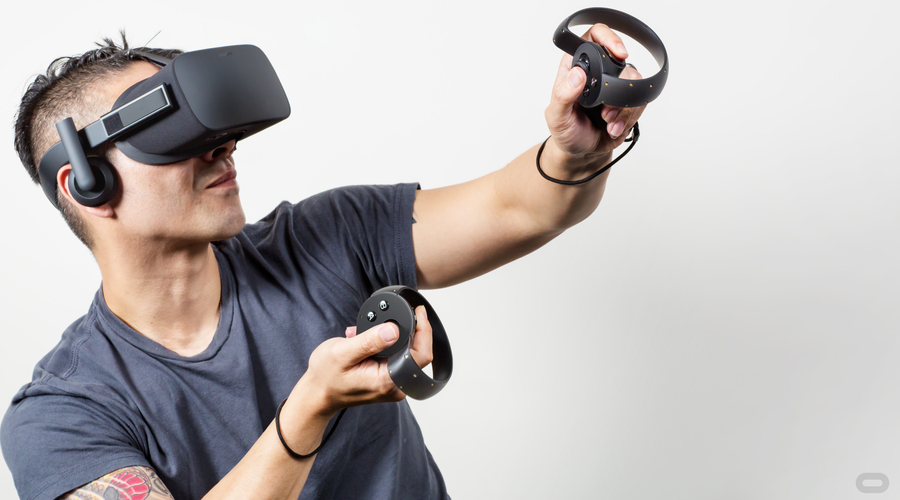Decoding Augmented Reality (AR): ''Enriching Real-Time Experiences by Integrating Digital Information with the Physical World"
Augmented reality (AR) seamlessly blends digital information into the user's real-world environment in real-time, providing a unique and interactive experience. Distinguishing itself from virtual reality (VR), which constructs entirely artificial environments, AR enhances the user's perception of the real world by overlaying generated perceptual information.
AR serves diverse purposes, whether visually transforming natural surroundings or furnishing users with supplementary information. Its pivotal advantage lies in its ability to meld digital and three-dimensional (3D) elements with the user's genuine surroundings, finding applications in decision-making support and entertainment.
Utilizing devices such as smartphones or smart glasses, AR delivers visual elements, sounds, and other sensory information, creating a seamless fusion of the digital and physical realms. This overlay alters the user's perception, either by adding digital elements to the environment or masking parts of the natural surroundings.
The term "augmented reality" was coined by Thomas Caudell, an employee of Boeing Computer Services Research, in 1990. It initially described the head-mounted displays used by electricians assembling intricate wiring harnesses. A notable early commercial application of AR was the yellow first-down marker introduced in televised football games around 1998. Presently, consumer-facing AR products include Google Glass, smartphone games, and heads-up displays (HUDs) in car windshields. Beyond consumer applications, AR is widely employed in industries such as healthcare, public safety, gas and oil, tourism, and marketing.
How does augmented reality work?
Augmented reality comes in various formats, accessible through smartphones, tablets, glasses, and, on the horizon, even contact lenses. The ongoing development of AR through contact lenses showcases the continuous evolution of this technology. Essential to AR implementation are hardware components like processors, sensors, displays, and input devices. Fortunately, mobile devices commonly feature these components, equipped with sensors such as cameras, accelerometers, Global Positioning System (GPS), and solid-state compasses, making AR more readily available to everyday users. For instance, GPS helps pinpoint the user's location, while the compass detects device orientation.
In more sophisticated AR applications, particularly those employed by the military for training purposes, machine vision, object recognition, and gesture recognition may be integrated. Given the computational intensity of AR, devices with limited processing power can offload data processing to more capable machines.
Developers craft augmented reality apps using specialized 3D programs, allowing them to connect animations or contextual digital information within the program to real-world augmented reality markers. These markers serve as triggers, activating the app or browser plugin to execute code and overlay the correct digital images when receiving data from a known marker. This dynamic interaction seamlessly blends the digital and physical realms, enhancing user experiences in various contexts.
Differences between AR and VR
Virtual reality (VR) is an immersive digital environment created through software, enticing users to suspend their disbelief and perceive the virtual world as real. This experience is typically facilitated through a headset that provides users with both visual and auditory stimuli.
In contrast, augmented reality (AR) leverages the existing real-world environment by superimposing virtual information onto it. The key distinction lies in the fact that AR integrates virtual elements into the user's perception of the actual surroundings, creating a mixed reality experience, whereas VR submerges users entirely into a digitally rendered environment.
The devices employed for these experiences also differ. VR utilizes headsets that cover the user's field of view, delivering simulated visual and audio inputs. On the other hand, AR devices are more versatile, ranging from smartphones and glasses to projections and heads-up displays (HUDs) in cars, offering a less restrictive interaction.
In a VR setting, users find themselves within a 3D environment, enabling movement and interaction with the digitally generated surroundings. In contrast, AR grounds users in the real-world environment, overlaying virtual data as a visual layer onto the physical surroundings. These distinctions in user immersion and interaction define the unique experiences offered by AR and VR technologies.

Top AR use cases
AR can be used in the following ways:
- Retail. Consumers can use a store's online app to see how products, such as furniture, will look in their own homes before buying.
- Entertainment and gaming. AR can be used to overlay a virtual game in the real world or enable users to animate their faces in different and creative ways on social media.
- Navigation. AR can be used to overlay a route to the user's destination over a live view of a road. AR used for navigation can also display information about local businesses in the user's immediate surroundings.
- Tools and measurement. Mobile devices can use AR to measure different 3D points in the user's environment.
- Architecture. AR can help architects visualize a building project.
- Military. Data can be displayed on a vehicle's windshield that indicates destination directions, distances, weather and road conditions.
- Archaeology. AR has aided archaeological research by helping archeologists reconstruct sites. 3D models help museum visitors and future archeologists experience an excavation site as if they were there.






Post a Comment
0Comments